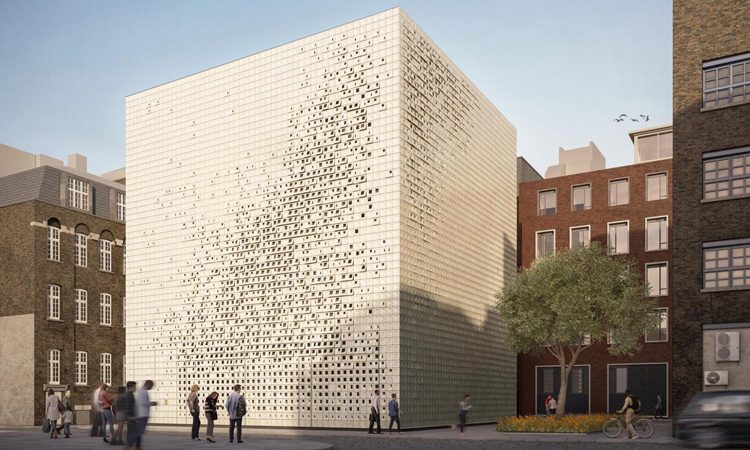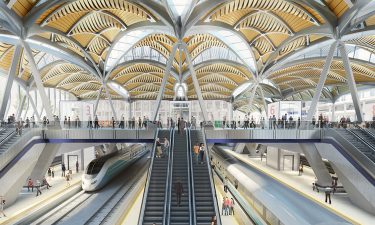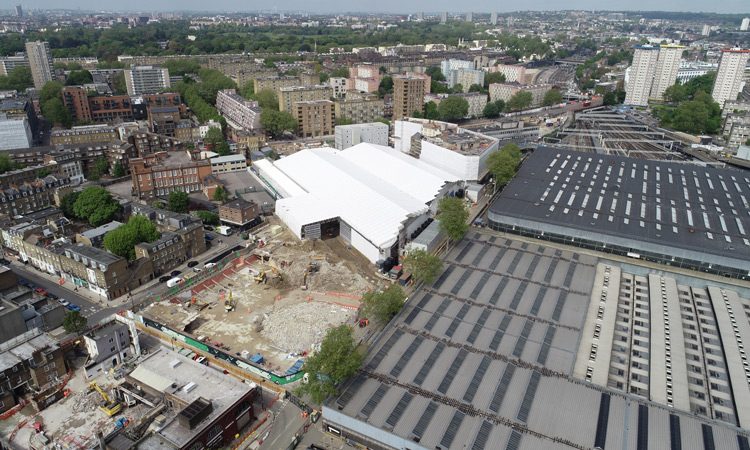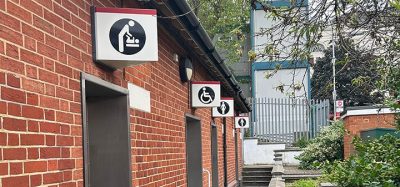Design approval granted for HS2 Euston vent shaft and substation
Posted: 9 August 2019 | Global Railway Review | No comments yet
Dubbed the ‘sugar cube’, the eye-catching building will be the first major structure to be built at Euston for HS2, and will contain a substation, electrical equipment as well as a vent shaft for the Northern line.


Covered with more than 13,000 glazed ivory-white tiles, the contemporary and functional design draws inspiration from historic London Tube stations, such as nearby Great Portland Street, and will help reflect light into the surrounding streets. Designed by architects Weston Williamson + Partners, with William Matthews Associates, its pattern of perforated tiles will allow air into the building and variate the façade – prompting HS2’s designers to dub it the ‘sugar cube’.
The glazed terracotta tiles – known as faience tiles – are an instantly recognisable feature of many London Underground stations, including South Kensington, Covent Garden and the former Euston Tube stations. It is robust, durable and low maintenance, making it ideal for functional buildings.


CGI of HS2 Euston station platforms
At Euston, the arrival of HS2 will more than double capacity, improving journeys for the 44 million people who use the station every year, as well as releasing space for extra commuter services into the capital. As a result, commuters from places such as Milton Keynes could see a 76 per cent increase in the number of seats into Euston during peak hours.
Welcoming the milestone, HS2’s Euston Programme Director, Rob Carr, said: “Rob continued: “The new vent shaft and substation will be one of the first things we build and it’s important we get it right. I’m pleased that Camden has given us the green light and I hope this intriguing, functional and contemporary design will be welcomed by all those who live, work and travel through Euston”
Weston Williamson + Partners Founding Partner, Chris Williamson, said: “The Euston vent shaft is an important and vital piece of urban infrastructure which facilitates a comfortable environment for all users. It has been a close collaborative design process and the result builds on the best of Britain’s infrastructure heritage with the use of materials and expressing functional requirements.”
The plans for the vent shaft were approved by the London Borough of Camden, the local planning authority, under Schedule 17 of the HS2 Act, subject to an agreement on suitable lighting. Its construction will allow the old vent shaft to be removed to make way for the new platforms.
The new shaft will be on Stephenson Way, a small street behind Euston Road, on the site of Wolfson House, which is currently being demolished. The structure will be as big below ground as above, with tunnels linking it to the Northern line.


Aerial drone shot of the Euston works, June 2019







